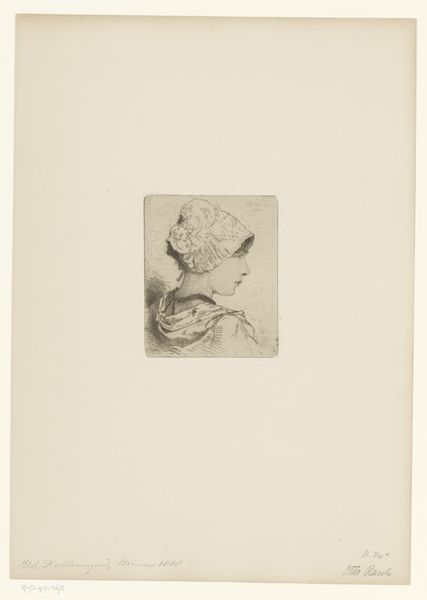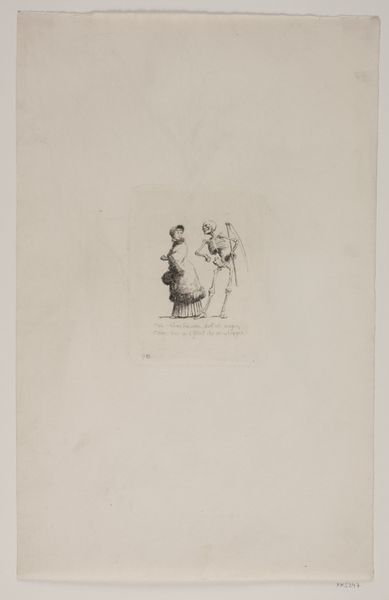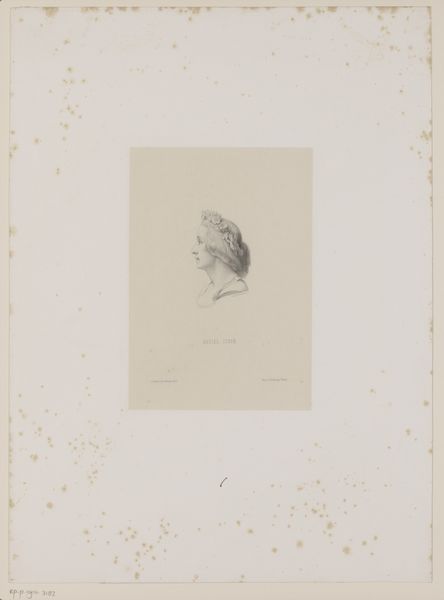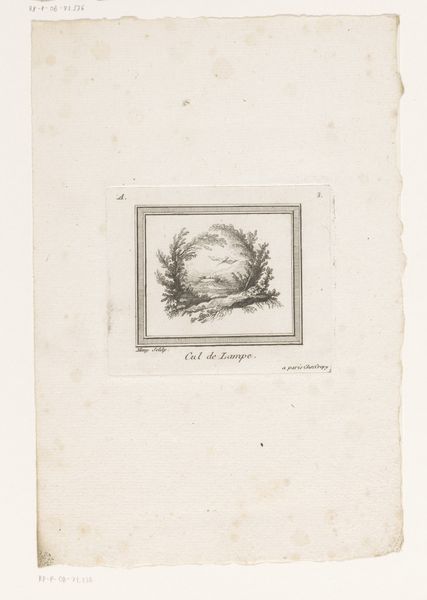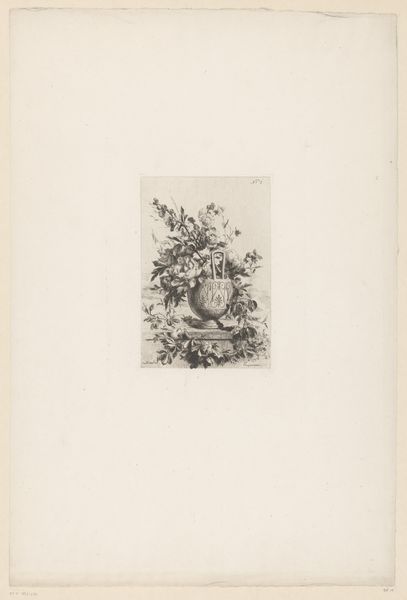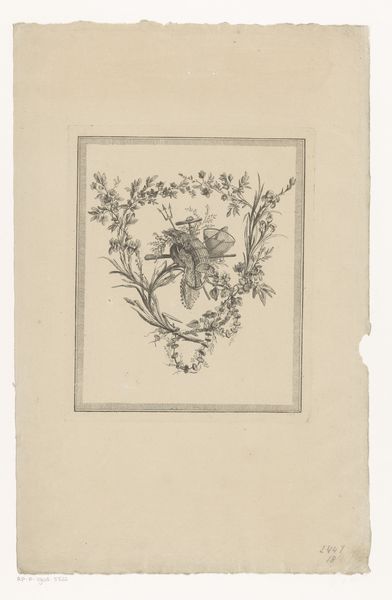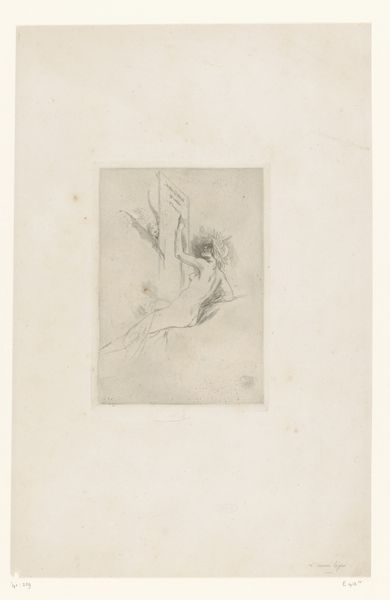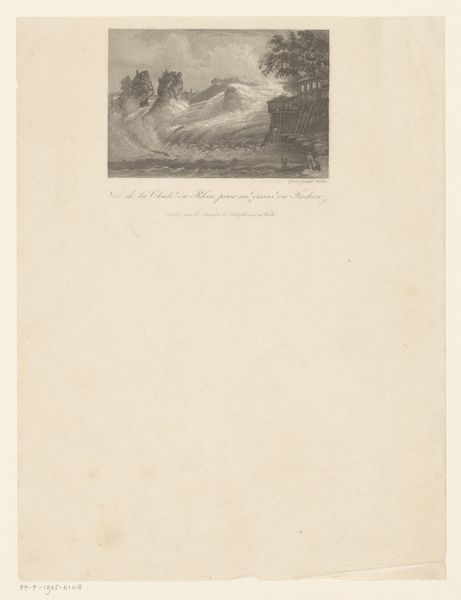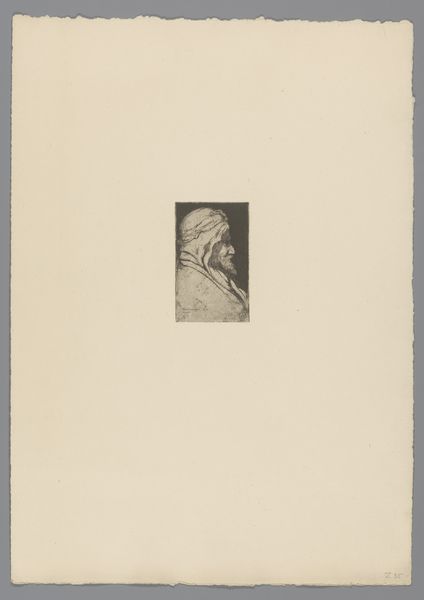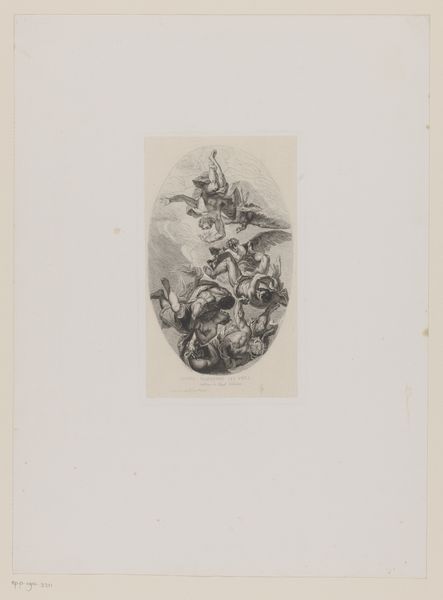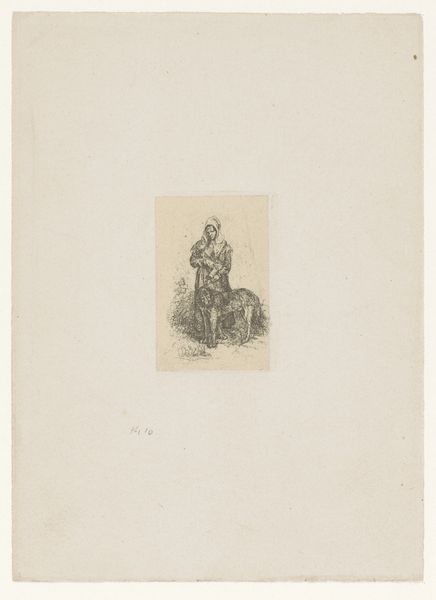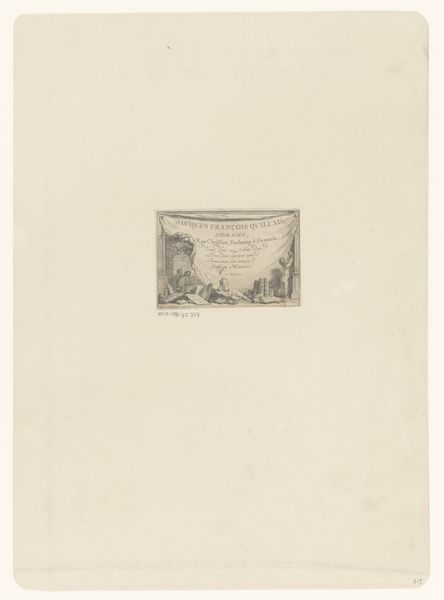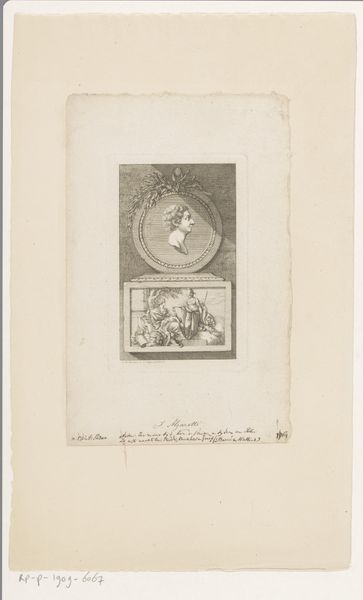
drawing, paper, ink
#
portrait
#
drawing
#
paper
#
ink
#
history-painting
#
academic-art
#
realism
Dimensions: height 228 mm, width 151 mm
Copyright: Rijks Museum: Open Domain
Editor: We’re looking at “Studie voor een figuur uit het Heilig Sacrament,” a drawing in ink on paper by Léopold Flameng, from 1860. I find it somber, almost claustrophobic. The figure is so hunched over. What stands out to you in terms of its formal qualities? Curator: Observe the linework. See how Flameng uses dense hatching and cross-hatching to create a sense of volume and shadow? The figure, while compressed, is remarkably three-dimensional. Note too the stark contrast between the highly detailed figure and the relatively blank space around it. It isolates the subject, enhancing the feeling of isolation you mentioned. Editor: It really does. I’m wondering about the rough draft text included in the piece, too, on the left of the page? Does that have anything to do with the formal aspects of the drawing? Curator: The inscription serves as a fascinating counterpoint to the highly finished figure study. While not directly influencing the visual form of the figure itself, it provides context. Its presence invites us to consider the drawing not just as an isolated object, but as part of a larger creative process. It reminds us of the artist’s hand, his thoughts and intentions made visible, alongside his technical skill. Notice how the quick, almost frantic quality of the handwriting contrasts with the careful rendering of the figure, drawing the viewers’ eyes between textual and visual space in a game of forms and perspectives. Editor: So the contrast between the loose text and the refined drawing creates tension and highlights the artistic process. Fascinating. Curator: Precisely. We learn to appreciate both the sketch-like quality of the text and the hyper-finished feel to the human rendering in front of us. Editor: I never thought about comparing textual versus visual as elements with equal impact. It changes how I interpret this piece entirely. Curator: It's a study, not only of form, but of intention and process. Keep asking such perceptive questions.
Comments
No comments
Be the first to comment and join the conversation on the ultimate creative platform.
